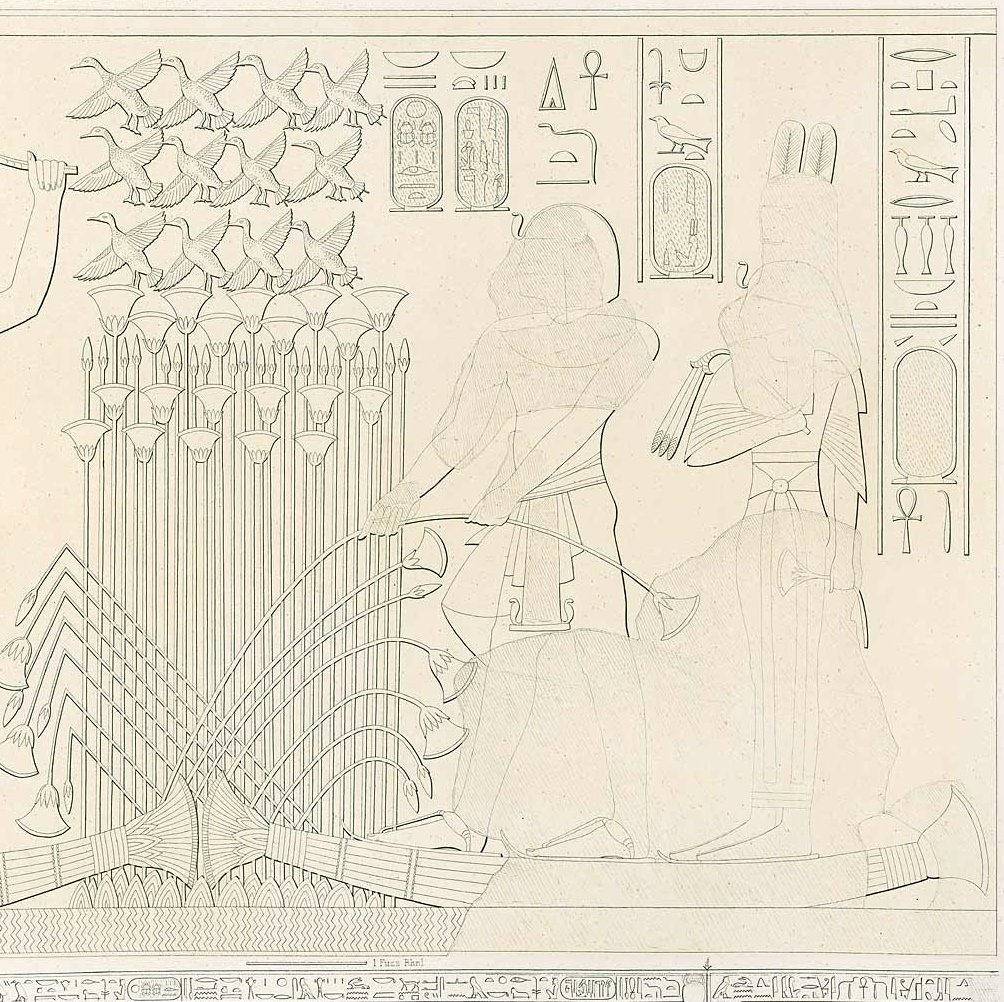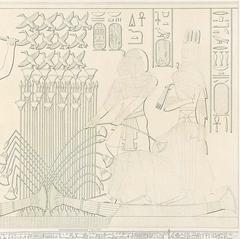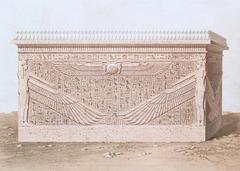
WV23 Tomb of Ay: Visiting Hours, Tickets, and Historical Information in Luxor, Egypt
Date: 14/06/2025
Introduction
The Tomb of Ay (WV23), tucked away in the tranquil Western Valley of the Kings near Luxor, Egypt, stands as a remarkable testament to the late 18th Dynasty and the historical transition that followed the Amarna period. While less visited than its counterparts in the main Valley of the Kings, WV23 captivates with its rich archaeological features, intricate wall paintings, and the enigmatic story of Pharaoh Ay—successor to Tutankhamun and a pivotal figure in Egypt’s restoration of traditional religious practices. This comprehensive guide will equip you with all the essential details for planning your visit: from historical context and architectural highlights to up-to-date visiting hours, ticketing, accessibility, and practical travel tips.
For those eager to delve deeper, guided tours and digital audio guides such as Audiala offer immersive storytelling and expert insights, ensuring your journey into Egypt’s royal past is both memorable and meaningful (Theban Mapping Project; Egyptology Resources; Official Luxor Tourism; Egyptian Ministry of Tourism and Antiquities; Ancient Egypt Alive; Egypt Planners).
Table of Contents
- Historical Background of WV23
- Architectural Features and Artistic Highlights
- Archaeological Investigations and Findings
- Funerary Goods and Sarcophagus
- WV23 in the Luxor Necropolis Context
- Visiting WV23: Practical Information
- Conservation and Responsible Tourism
- Frequently Asked Questions (FAQs)
- Conclusion and Visitor Tips
- References and Further Reading
Historical Background of WV23
Discovery and Location
WV23, or the Tomb of Ay, is located in the Western Valley of the Kings (Wadi al-Gharbi), a serene and less crowded section of Luxor’s vast necropolis. Italian explorer Giovanni Battista Belzoni accidentally discovered the tomb in 1816, marking a significant milestone in the exploration of Theban tombs (Theban Mapping Project). The Western Valley is sometimes referred to as the “Valley of the Monkeys,” and is home to only a handful of royal tombs, including that of Amenhotep III (WV22).
Pharaoh Ay and the Late 18th Dynasty
Ay served as vizier, high official, and possibly father-in-law to Tutankhamun before ascending the throne around 1323 BCE. His short reign marked the end of the Amarna period, during which Egypt returned to traditional polytheistic worship after Akhenaten’s religious reforms. Ay’s burial in the Western Valley—apart from most other 18th Dynasty rulers—suggests a complex political and religious climate (Egyptology Resources).
Architectural Features and Artistic Highlights
WV23 follows a classic T-shaped layout typical of late 18th Dynasty tombs. The tomb includes a sloping entrance corridor, a series of chambers, and a decorated burial chamber. Its geometric plan and some artistic motifs reflect the lingering influence of Amarna art. Notable wall paintings depict Ay in the presence of deities such as Osiris and Anubis, although many have suffered from ancient vandalism. The iconography and style bear resemblance to Tutankhamun’s tomb, highlighting the continuity and transition in royal funerary customs (Luxor Museum).
Archaeological Investigations and Findings
After Belzoni’s initial discovery, the tomb was documented by Karl Richard Lepsius in the mid-19th century. Later, Alexander Piankoff and the University of Minnesota Egyptian Expedition conducted detailed studies and excavations, revealing evidence of ancient desecration—possibly motivated by political efforts to erase the memory of Amarna-related rulers. Despite damage, the tomb remains invaluable for understanding the religious texts and burial practices of the period (Egyptian Ministry of Tourism and Antiquities).
Funerary Goods and Sarcophagus
Most original burial goods were lost to ancient looters. Only fragments of the red granite sarcophagus and a few small artifacts have been recovered. The damage to the sarcophagus and its possible reuse in antiquity further underline the tomb’s turbulent history. Nevertheless, surviving decorations and fragments are crucial for reconstructing the evolution of royal burials in the late 18th Dynasty.
WV23 in the Luxor Necropolis Context
WV23 is part of the larger Theban necropolis, which includes the Valley of the Kings, Valley of the Queens, and numerous tombs of nobles. Ancient Thebes (modern Luxor) was the religious and political heart of Egypt during the New Kingdom, and the Western Valley’s tombs, though fewer in number, are key to understanding the shifts in royal burial traditions (Official Luxor Tourism).
Visiting WV23: Practical Information
Visiting Hours and Tickets
- Hours: WV23 is typically open daily from 6:00 AM to 5:00 PM during the summer and 6:00 AM to 4:00 PM in winter. Visiting hours may adjust for conservation or religious holidays. Early morning visits are recommended for cooler temperatures and fewer crowds (Egypt Planners).
- Tickets: WV23 often requires a separate ticket from the general Valley of the Kings entry. As of 2025, the additional fee is usually 100–150 EGP. Tickets are available at the main Valley of the Kings ticket office. Students with valid international IDs can receive a 50% discount on most archaeological site tickets, including WV23 (egypttoursbylocals.com).
Getting There and On-Site Navigation
- From Luxor: Cross the Nile via public ferry, private motorboat, or the Luxor Bridge to the West Bank (Wandering Ruchika).
- To the Valley of the Kings: Taxis, private cars, and organized tours are the most common transport options from the river or bridge landing (Intrepid Scout).
- To the Western Valley: From the Valley of the Kings visitor center, a paved road leads west; the walk to WV23 is about 2 km (1.2 miles) and can be challenging in the heat. Organized tours may include transfers; otherwise, prepare for a sun-exposed walk (Ancient Egypt Alive).
Accessibility and Facilities
- Terrain: The approach and tomb itself involve uneven, rocky ground and stairs, making wheelchair access impossible and posing difficulties for those with limited mobility (ancientegyptonline.co.uk).
- Facilities: Restrooms and a café are at the main Valley of the Kings visitor center; there are no amenities within the Western Valley itself.
- On-Site Tips: Bring water, sun protection, and sturdy walking shoes. Modest, comfortable clothing is advised.
Guided Tours and Audio Guides
- Guided Tours: Licensed guides are available at the visitor center for historical context, though they are not permitted inside the tomb itself.
- Audio Guides: Apps such as Audiala offer interactive, expert-led audio experiences, adding depth to your visit.
Nearby Attractions
- Other Tombs: In addition to Ay’s, the Western Valley houses Amenhotep III’s tomb (WV22). The main Valley of the Kings, Valley of the Queens, and sites like the Mortuary Temple of Hatshepsut and Colossi of Memnon are accessible via separate transport (Egypt Planners).
Conservation and Responsible Tourism
WV23, like many ancient Egyptian sites, faces threats from environmental conditions and past vandalism. Conservation measures include structural stabilization and climate control. Visitors are urged to respect barriers, avoid touching walls, and support sustainable tourism practices that help preserve this UNESCO World Heritage Site (E-Visa Egypt).
Frequently Asked Questions (FAQs)
Q: What are the WV23 visiting hours?
A: Generally, 6:00 AM–5:00 PM (summer), 6:00 AM–4:00 PM (winter); check locally for updates and possible seasonal changes.
Q: How much do WV23 tickets cost?
A: About 100–150 EGP, in addition to the main Valley of the Kings ticket.
Q: Can I buy tickets online?
A: Online ticketing is limited; purchase tickets at the Valley of the Kings entrance or via tour operators.
Q: Is WV23 accessible for people with disabilities?
A: The tomb is not wheelchair accessible due to uneven terrain and stairs.
Q: Can I take photos inside WV23?
A: Photography is generally prohibited to protect the artwork, unless you purchase a special camera permit.
Q: Are guided tours available?
A: Yes, guides offer tours up to the tomb but cannot accompany visitors inside.
Q: Is WV23 suitable for children?
A: Supervision is required due to stairs and uneven surfaces.
Conclusion and Visitor Tips
WV23, the Tomb of Ay, is a lesser-known yet richly rewarding site for history enthusiasts and curious travelers alike. Its evocative art and architecture shed light on a tumultuous period in ancient Egypt, while its relatively secluded location offers a contemplative alternative to the busier tombs of Luxor. For the best experience:
- Check the latest visiting hours and ticket prices before your trip.
- Visit early in the morning for cooler temperatures and quieter exploration.
- Wear suitable clothing and bring water, sun protection, and sturdy shoes.
- Consider guided tours or audio guides like Audiala for deeper understanding.
- Respect conservation guidelines to help preserve this heritage for future generations.
For more information, visit the Official Luxor Tourism Website and the Egyptian Ministry of Tourism and Antiquities.
Visual Aids
Alt text for images includes phrases like “WV23 visiting hours,” “WV23 tickets,” and “Luxor historical sites” for search optimization.
References and Further Reading
- WV23 Tomb of Ay: Visiting Hours, Tickets & History of Luxor’s Hidden Royal Tomb (Theban Mapping Project)
- Archaeological and Cultural Significance of WV23 in Luxor: Visitor Guide, History, and Tips (Egyptology Resources)
- Official Luxor Tourism Website
- Egyptian Ministry of Tourism and Antiquities
- Ancient Egypt Alive
- Egypt Planners
- Intrepid Scout
- Traveltriangle
- Earth Trekkers
- ancientegyptonline.co.uk
- hurghadalovers.com
- egypttoursbylocals.com
- Wandering Ruchika
- E-Visa Egypt
































































